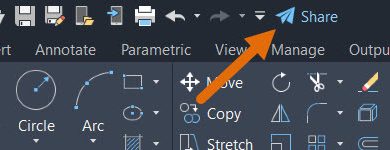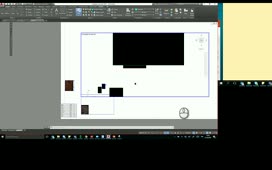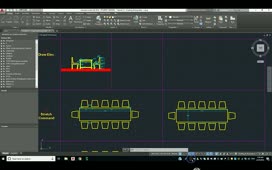Relative coordinates are coordinates specified in relation to previous coordinates. When you start a command and the program prompts you to specify a point, you can either click to pick a point or you can type the absolute coordinates of the point.
On the Home ribbon, in the Draw panel, click the Line tool. The program prompts you to specify the first point of the line. Type 4,5 and press ENTER. Note that when you typed the comma, the X-coordinate field became locked and the Y-coordinate field became active, the same as if you had pressed the TAB key. And when you pressed ENTER, you specified the first point of the line and now the program is prompting you to specify the next point.
Suppose you want to draw a square with each side exactly 2 units long. Although you could certainly specify each corner of the square using absolute coordinates, it is usually much easier to specify the next point of each line relative to the end point of the previous line.
To draw a horizontal line exactly 2 units long in the positive X-direction, type 2,0 and then press ENTER. Notice that in the command line, you can see that the program actually added an at-symbol (@) in front of the coordinate. The at-symbol tells the program to use relative coordinates, so the next point is located relative to the previous point. With dynamic input, you do not need to actually type the at-symbol.
To draw the next line as a vertical line exactly 2 units long in the positive Y-direction, type 0,2 and then press ENTER.
The next line segment needs to be a horizontal line that extends 2 units in the negative X-direction. So this time, type -2,0 and then press ENTER.
The final line segment needs to be a vertical line that extends 2 units in the negative Y-direction. So you could type 0,-2 and then press ENTER. But since this will be the final line segment to close the square, there is an easier way to draw this final line segment. Right-click and choose the Close option to draw that closing segment and end the command.
Source: Autodesk



